Chinese Flower Symbolism Easy Chinese Dragon Drawings
Chinese culture has always been steeped in mythical wisps of symbolism and mystery. Flowers, many symbolic of luck and wealth, seem to permeate every aspect of Chinese culture.
Even treeflowers like the plum blossoms have been depicted in Chinese art and poetry for centuries. Let's dive into the world of Chinese flowers and grow some of our own!
1. Chinese Rose

Native to Southwest China and the province of Hubei, the Chinese Rose is also known as China or Bengal rose. It has the unique ability to bloom all year round.
Its beauty makes it the "Queen of flowers" given to romantic partners. It also symbolizes good luck and is gifted to celebrate achievements and birthdays.
- Botanical Name : Rosa chinensis
- Chinese meaning : Good luck
- Common Colors : Red
- Popular Varieties : ' Spontanea' , Rosa semperflorens
- Best for Growing Zones : 7-9
- Light Requirements : Full sun
2. Camellia
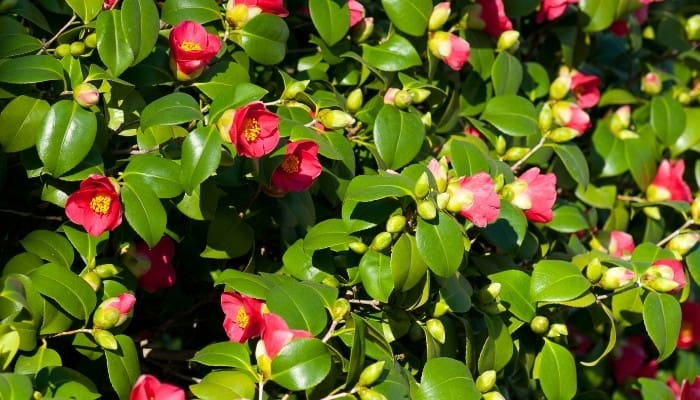
These large plants are considered Southern China's national flower. Often made into teas and essential oils, the camellia represents young "sons and daughters" in Chinese culture.
The camellia also infers faithfulness, perfection, and passion or desire. Fun fact, the oil of the camellia plant is used to sharpen blades and knives.
- Botanical Name : Camellia japonica
- Chinese meaning : "Young sons & daughters"
- Common Colors : Red, white, pink
- Popular Varieties : 'April Tryst', 'April Rose', 'Winter's Rose'
- Best for Growing Zones : 6
- Light Requirements : Partial shade
3. Lotus
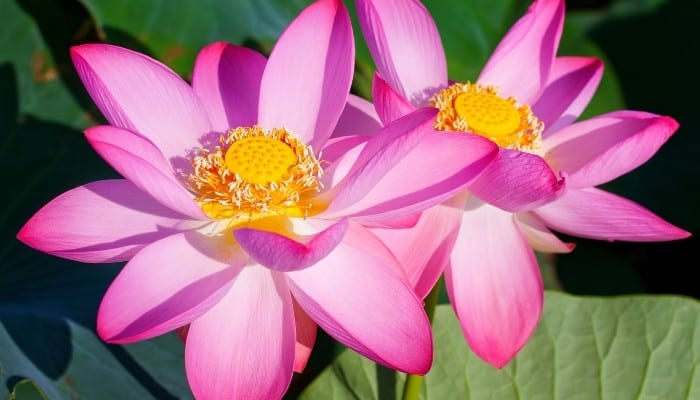
The lotus has deep spiritual meaning in Buddhism. Its meanings are purity and innocence. Many believe the lotus is the seat of Buddha, making it a holy flower.
The lotus flower is often used in Chinese medicine for coughs, fever, and stomach problems. Easily grown in water features and ponds, its gentle movements represent tranquility and beauty.
- Botanical Name : Nelumbo nucifera
- Chinese meaning : Purity, tranquility, and beauty
- Common Colors : Pink, white, yellow, purple, blue
- Popular Varieties : 'Pink China', 'Sapphire Blue', 'Beautiful Dancer'
- Best for Growing Zones : 5-10
- Light Requirements : At least six hours of direct sun
4. Orchid
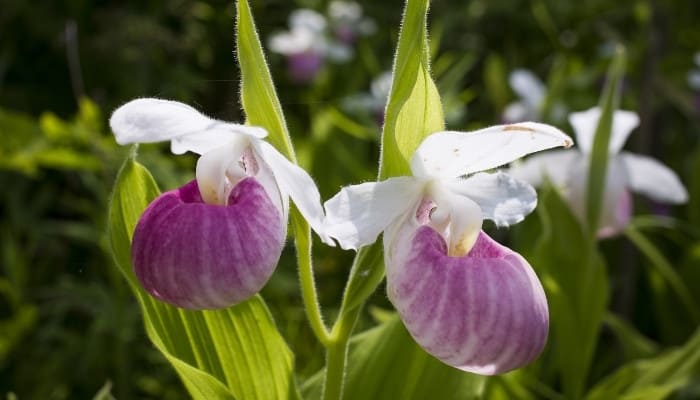
Most orchids are indoor plants, but there are hardier ground-growing orchids you can grow outdoors. In China, the orchid symbolizes love, beauty, wealth, and the unity of married couples.
These ancient plants are thought to have been around since before the continents shifted!
- Botanical Name : Orchidaceae
- Meaning : Love, wealth, marriage
- Common Colors : White, blue, purple, pink, yellow
- Popular Varieties : Lady slipper, ladies tresses, Chinese ground orchid
- Best for Growing Zones : 8
- Light Requirements : Indirect light
5. Chrysanthemum
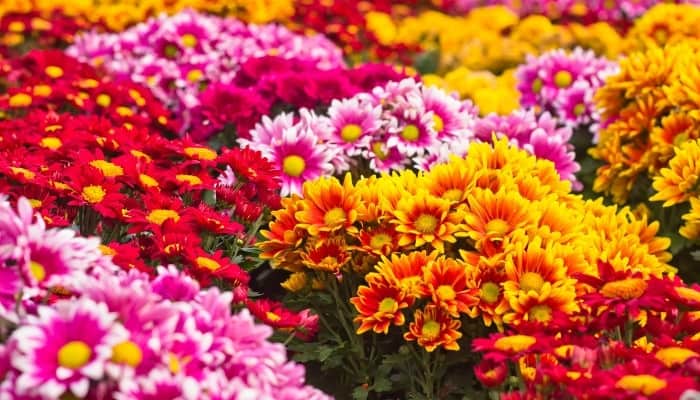
China started cultivating chrysanthemums centuries ago. Ancient Chinese writings mention the flower from as far back as the 15 century B.C.
The boiled roots of chrysanthemums are believed to provide relief from headaches. They're symbolic of the ninth lunar month and autumn.
The Chinese word for chrysanthemum symbolizes long life and duration.
- Botanical Name: Chrysanthemum
- Meaning : Honor, longevity, good luck, and vitality
- Common Colors : Red, white, yellow, violet
- Popular Varieties : Single blooms, spider blooms, quilled blooms, anemone
- Best for Growing Zones : 5-9
- Light Requirements : 6 hours of sunlight daily
6. Hibiscus
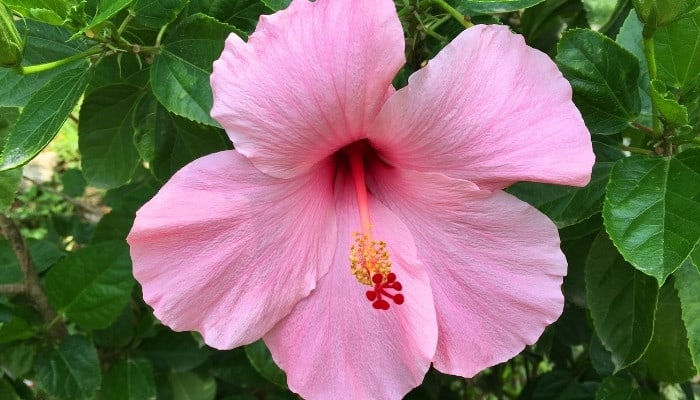
Also known as the Chinese hibiscus, the hibiscus is very popular in China.
Hibiscus flowers are a traditional Chinese medicinal herb that promotes appetite, clears summer heat, promotes diuresis, relieves cough and thirst, and clears infections.
The petals are even used in making women's black hair dye or black shoe polish.
- Botanical Name : Hibiscus
- Meaning : Fame, glory, splendor, riches
- Common Colors : Red, orange, yellow, pink, multicolor
- Popular Varieties : China rose, rock hibiscus, rose mallow
- Best for Growing Zones : 8-11
- Light Requirements : Full sunshine
7. Magnolia
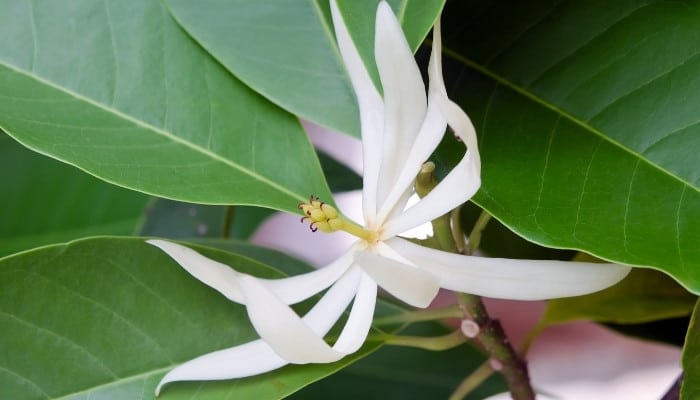
The magnolia is beloved in China and has been selectively bred for centuries. The flower was very expensive and precious in ancient times, only owned by Chinese Emperors.
Magnolias have medicinal properties that help with depression, indigestion, weight loss, constipation, asthma, headaches, and anxiety.
- Botanical Name : Magnolia spp.
- Meaning : Honor, wealth, feminine beauty, purity
- Common Colors: White, pink, red-purple, purple
- Popular Varieties : Anise magnolia, bigleaf magnolia, saucer magnolia
- Best for Growing Zones : 7-10
- Light Requirements : Sun or partial shade
8. Iris

In China, it's believed the iris is a messenger and spirit of summer. It brings the news of summer's arrival, and as the summer wind blows, its petals fly and flutter like butterfly wings.
That's why it's famously known as the "Purple Butterfly" in China. It's also believed to prolong life when eaten.
- Botanical Name : Iris
- Meaning : Wisdom, messages, faith, purity, new beginnings
- Common Colors: Blue, purple, red, orange, yellow, white
- Popular Varieties : Bearded iris, Iris typhifolia, yellow flag iris, dwarf bearded iris
- Best for Growing Zones : 3-10
- Light Requirements: Full sun
9. Peony
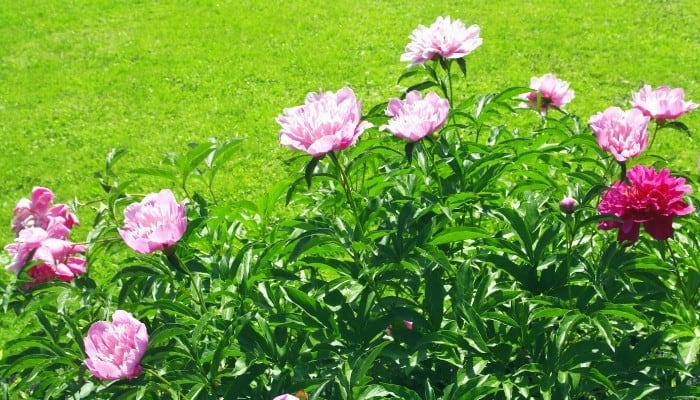
The peony flower has been held in high esteem in China for centuries. They're often known as the king of flowers and are China's unofficial national flower.
In ancient China, they were often the flower of choice at weddings and were sewn into the clothes of Imperial family members. You could lose your head as a commoner if you wore anything with peonies.
- Botanical Name: Paeonia spp.
- Meaning : High value, honor, prosperity, fame, wealth
- Common Colors : Red, pink, white
- Popular Varieties : 'Sarah Bernardt', 'Karl Rosenfield', 'Shirley Temple'
- Best for Growing Zones : 3-8
- Light Requirements : Full sun to partial shade
10. Trichosanthes Kirilowi
Famously known as the Chinese snake gourd or Chinese cucumber, the trichosanthes kirilowii is a flowering plant found in Shandong, Henan, Shanxi, Hebei, and Shaanxi.
It's a perennial climber that grows fast and is among the 50 fundamental herbs used in traditional Chinese medicine.
- Botanical Name: Trichosanthes kirilowii
- Meaning : Healing
- Common Colors: White
- Popular Varieties: Pointed gourd, snake gourd, Indrayan
- Best for Growing Zones : 8-11
- Light Requirements : Full sunlight, no shade needed
11. Sunflower
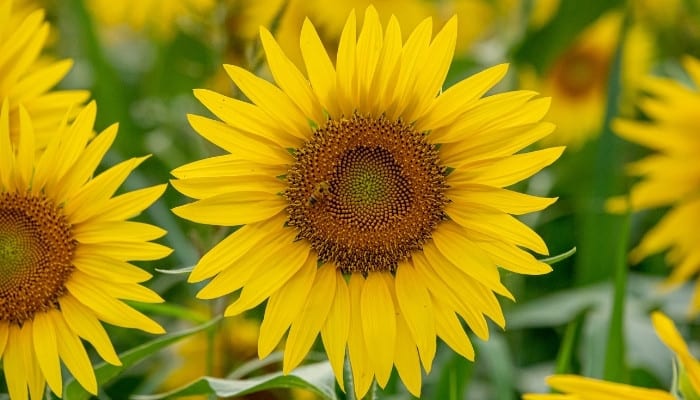
In Chinese culture, the sunflower represents good luck and longevity. Giving sunflowers at the start of a new business or graduation is considered auspicious.
In ancient China, people believed they radiated powers of immortality. Royalty ate sunflower seeds as snacks to attain immortality.
- Botanical Name: Helianthus annuus
- Meaning: Good luck, longevity, happiness, vitality
- Common Colors : Yellow, golden yellow, ruby red, bronze, white
- Popular Varieties : 'Little Becka', 'Elf', 'Soraya', 'American Giant'
- Best for Growing Zones: 4-9
- Light Requirements : 6-8 hours direct sunlight daily
12. Azalea
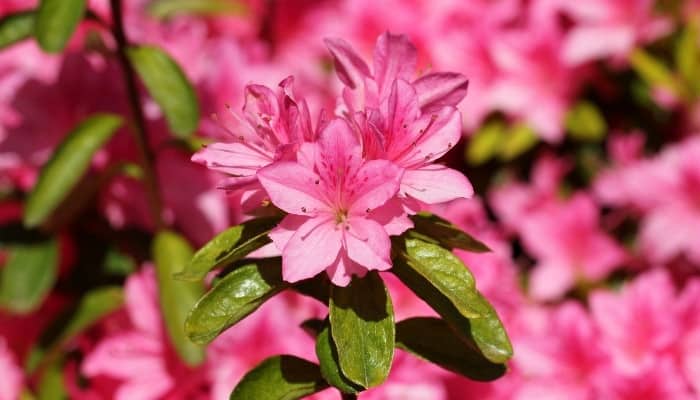
A native of East Asia, the azalea is an important ornamental flower of classical Chinese gardens, and there are countless hybrids with different kinds of beauty.
The flower was made famous by poets in the Tang Dynasty who were often homesick, expressing sadness every time they saw the azalea as they missed their loved ones.
- Botanical Name: Rhododendron spp.
- Meaning: Womanhood, temperance, passion, fragility
- Common Colors: Red, yellow, pink, orange, white
- Popular Varieties: 'Northern hi-lights', 'Lemon Lights', 'Encore Autumn Amethyst'
- Best for Growing Zones: 6-9
- Light Requirements : Full sun or partial shade
13. Narcissus
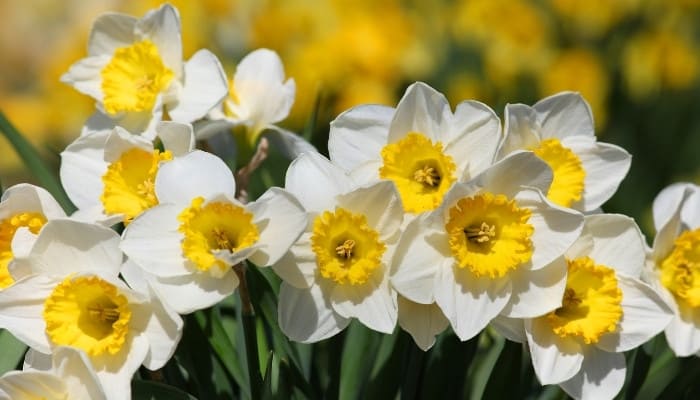
Commonly called the daffodil and encompassing jonquils as well, the Narcissus genus has many names in Chinese culture. It symbolizes good fortune and is highly esteemed for bringing forth good tidings.
It's the symbol of the Chinese New Year with many legends associated with the flower, including the water goddess of Xiang River. It's the most popular flower in east China's Fujian province.
- Botanical Name: Narcissus
- Meaning : Good luck, prosperity, good fortune, re-birth
- Common Colors: White or golden tangerine
- Popular Varieties: Paperwhite, cream narcissus, joss flower, Narcissus tazetta
- Best for Growing Zones : 8-11
- Light Requirements : Full sun or partial shade
14. Osmanthus

The Osmanthus is one of the 10 reputed traditional flowers of China. Only those with wealth and status could plant them in ancient China.
It's a traditional Chinese symbol of romance and love. Used in making flower-scented tea, the Osmanthus has grown in China for thousands of years.
A famous city called Guilin has many Osmanthus trees with a scenery reputed by many as the finest under the heavens.
- Botanical Name: Osmanthus fragrans
- Meaning: Love, fertility, faithfulness, nobility, prosperity
- Common Colors: White, pale yellow, yellow, orange-yellow
- Popular Varieties: 'Fundingzhu', 'Orange Supreme', 'Apricot Gold', 'Butter Yellow'
- Best for Growing Zones : 9-11
- Light Requirements: Full sun to partial shade
15. Rhododendron

The rhododendron is among the most famous flowers in China and is often referred to as the "Venus of flowers."
Chinese poets and scholars have long admired its beauty with some of the Tang Dynasty describing it as making all flowers pale before its beauty.
Though similar to azaleas in some ways, rhododendrons have different bloom times, flowers, stamens, colors, and foliage.
- Botanical Name: Rhododendron spp.
- Meaning : Purity, beauty, devotion, innocence
- Common Colors: White, purple, orchid pink, red
- Popular Varieties: ' Champion's', 'Westlands', 'Hong Kong', 'Mrs. Farrer's'
- Best for Growing Zones: 8-10
- Light Requirements: Part shade to full shade
16. Gardenia
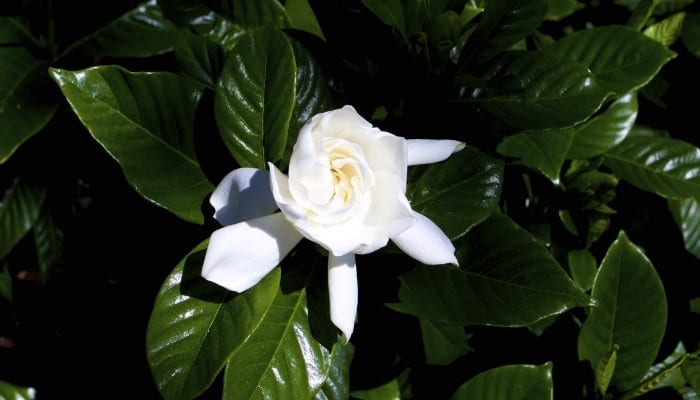
In Chinese tradition and culture, the gardenia symbolizes November and represents feminine beauty and strength.
Chinese women traditionally adorned their hair with gardenia flowers and used its fragrance as a vital ingredient in making incense and cosmetics. Seeds of the flower were used to make a yellow dye.
- Botanical Name: Gardenia spp.
- Meaning: Beauty, clarity, trust, hope, renewal
- Common Colors: White, yellow, red, pink
- Popular Varieties: 'Four Seasons', 'Golden Magic', 'August Beauty', 'Belmont'
- Best for Growing Zones: 8-11
- Light Requirements: Bright indirect sunlight or partial shade
17. Jasmine
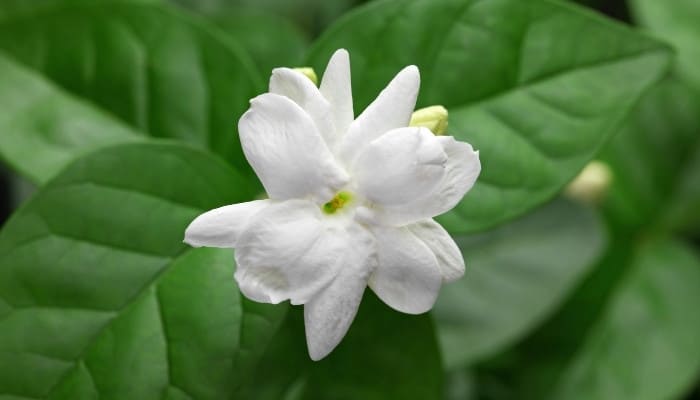
As early as the Western Han Dynasty (206BC-9AD), jasmine was grown in Fuzhou, the largest city in China's Fujian province.
In Chinese culture, jasmine symbolizes forever love and is one of the holy flowers of Buddhism. Often called the "Queen of the Night," the fragrance of jasmine is considered to be of heaven.
- Botanical Name: Jasminum spp.
- Meaning: Beauty, love, sensuality
- Common Colors: W hite, yellow, bicolor blooms
- Popular Varieties: Royal jasmine, winter jasmine, dwarf jasmine
- Best for Growing Zones: 8-10
- Light Requirements: Full sun to part shade
18. Lilies

In Chinese culture, lilies signify happiness and good fortune. They're often gifted to women on their weddings or birthdays.
Lilies are considered bringers of sons, and traditional Chinese culture favored sons. The flower also represents 100 years of love in China and is popular at weddings.
- Botanical Name: Lillium
- Meaning: Love, happiness, good fortune, purity
- Common Colors: White, pink, yellow, red, orange
- Popular Varieties: Oriental lilies, Asiatic lilies, trumpet lilies,
- Best for Growing Zones: 4-9
- Light Requirements: Full sun, part sun, or light shade
19. Aster
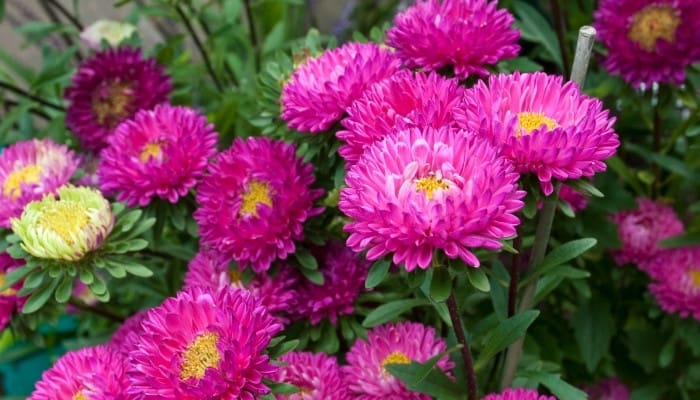
The aster is a distinctive daisy-like flower known for its star-shaped flower head. They've been grown in China for at least 2,000 years.
Asters were used in traditional Chinese medicine and tea to cure lung deficiencies, coughs, hangovers, and indigestion.
They're composite flowers, comprising a central core of many tiny flowers surrounded by long petals.
- Botanical Name: Asteraceae family
- Meaning: Wisdom, love, faith
- Common Colors: White, purple, red, pink
- Popular Varieties: ' Crego Giant', 'Fireworks', 'Gala', 'Gremlin Double'
- Best for Growing Zones: 2-11
- Light Requirements: Full sun to partial shade
20. Wintersweet
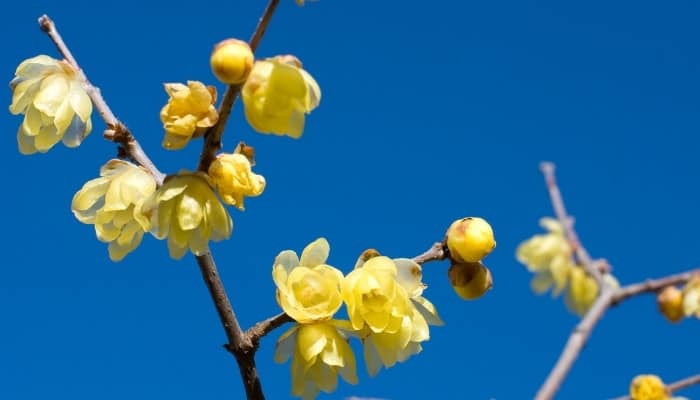
Wintersweet is known as the flower of December in China because it only blossoms in harsh winter.
The bowl-shaped flowers have a sweet fragrance and usually bloom from November to March, unafraid of the cold or snow.
- Botanical Name: Chimonanthus praecox
- Meaning: Fearless, strong, unbending
- Common Colors: Bright yellow, gold, purple, red, white
- Popular Varieties: ' Grandiflorus', 'Luteus'
- Best for Growing Zones: 7-9
- Light Requirements: Full sun to partial shade
21. Balsamine

Known in China as the flower of July, balsamine can easily grow to 30 inches, but it exceeds these heights in the wild.
Different parts have medicinal properties, and traditional Chinese remedies use them for disease and skin medications.
It's believed to be a phoenix incarnation, one of Chinese mythology's most powerful and beautiful mythical animals.
- Botanical Name: Impatiens balsamina
- Meaning: Energy, beauty, attractiveness
- Common Colors: Red, pink, purple, white
- Popular Varieties: Rose balsam, garden balsam, spotted snapweed
- Best for Growing Zones: 2-11
- Light Requirements: Full sun or partial shade
22. Water Lilies
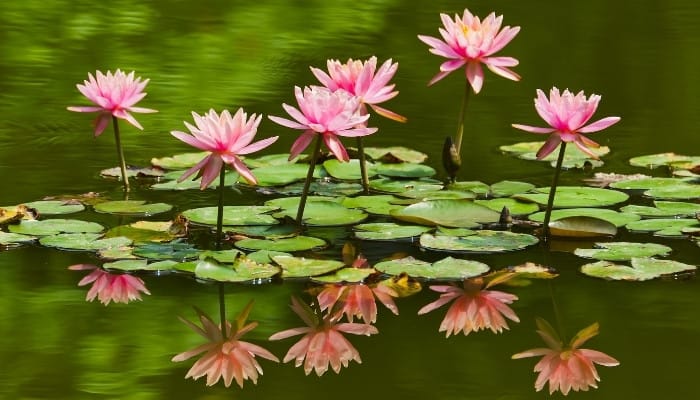
The Chinese name for water lilies translates to sleeping lotus, and they've been cultivated as an ornamental plant for over 3,000 years.
According to legend, the flower was once a star that fell from the sky and turned into a water lily.
In Chinese and Buddhist traditions, they symbolize resurrection since the flowers close at night and open in the morning at first light.
- Botanical Name: Nymphaeaceae
- Meaning: Purity, divine birth, regeneration
- Common Colors: White, yellow, pink, red, pastel orange
- Popular Varieties: ' Pale Moon', 'Morning Mist', 'Maroon Pink'
- Best for Growing Zones: 9-11 (tropical) and 4-11 (hardy)
- Light Requirements: 6 hours direct sunlight minimum
23. Chinese Sacred Lily

The Chinese sacred lily has been cultivated in China for over 1,000 years, and it's among the top 10 famous flowers, thanks to its beauty and fragrance.
Sacred lily bulbs are a must-have for many Chinese families during the Chinese Spring Festival.
- Botanical Name: Narcissus tazetta
- Meaning: Abundance, purity, grace, good fortune
- Common Colors: Golden tangerine, white
- Popular Varieties: Bunch flowered daffodil, polyanthus daffodil
- Best for Growing Zones: 1-10
- Light Requirements: Full sun or partial shade
24. Ranunculus

Usually known as buttercups, there are around 78 species and nine varieties of Ranunculus flowers widely distributed in China.
They embody strong adaptability and have traditionally been used in folk medicine. In ancient times, people used them in divination to teach wisdom and deepen spiritual connections.
- Botanical Name: Ranunculus spp.
- Meaning: Attractiveness, charm, perseverance, divinity
- Common Colors: White, pink, red, yellow, purple
- Popular Varieties: Persian buttercup, meadow buttercup, hairy buttercup
- Best for Growing Zones: 8-10
- Light Requirements: Full sun
25. Tulip
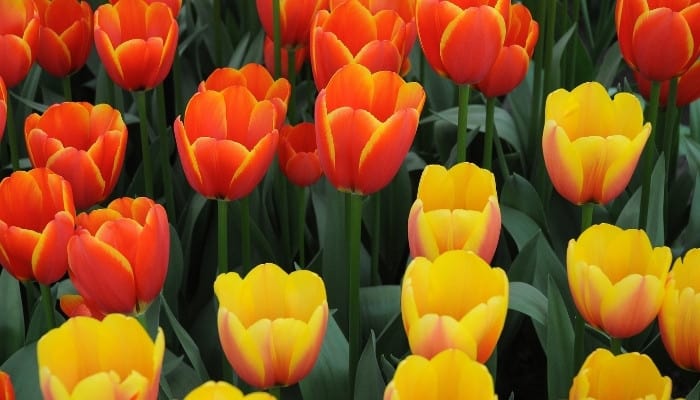
Tulips originally grew wildly in the Tian Shan mountains before the tulip mania of the 17th century when they became an exotic luxury and collector's item.
They've captivated people for generations, and since ancient times, they're considered a declaration of love, a symbol of new beginnings.
- Botanical Name: Tulipa
- Meaning: Luck, prosperity, love, rebirth
- Common Colors: White, red, pink, yellow, purple
- Popular Varieties: Triumph tulips, Darwin tulips, fringed tulips
- Best for Growing Zones: 3-8
- Light Requirements: Full sun
26. Chinese Carnation
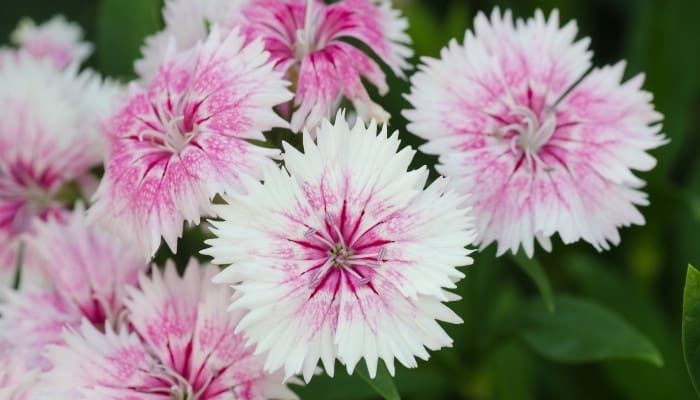
The Chinese carnation is commonly known as China pink. It features magnificent colors, making it perfect for lining garden boxes, flower beds, and edges.
You can sow it as early as February, and it doesn't require much maintenance after it's settled in. A native of China, it offers a prolonged blooming period from March and April to October.
- Botanical Name: Dianthus chinensis
- Meaning: Fascination, love, gratitude
- Common Colors: Solid or mixed white to red with instances of pink, purple
- Popular Varieties: 'Floral Lace Crimson', 'Diamond Blush Pink'
- Best for Growing Zones: 6-9
- Light Requirements: Full sun or partial shade
Conclusion
Chinese culture is one of the oldest and richest on earth, and flowers seem to permeate every part of this ancient civilization.
From social and religious to philosophical elements, flowers hold a unique place and meaning respected by everyone in China.
Next time you come across any of the magnificent flowers mentioned above, try and decipher the hidden message within!
Source: https://whyfarmit.com/chinese-flowers/
0 Response to "Chinese Flower Symbolism Easy Chinese Dragon Drawings"
Post a Comment